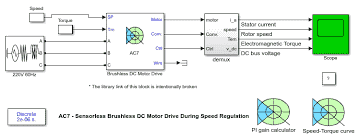2023-2024 Power Electronics Projects in Bangalore
2023-2024 Power Electronics Projects for Final Year EEE Students
A grid-connected photovoltaic power system, or grid-connected PV power system is an electricity generating solar PV power system that is connected to the utility grid. A grid-connected PV system consists of solar panels, one or several inverters, a power conditioning unit and grid connection equipment. They range from small residential and commercial rooftop systems to large utility-scale solar power stations. Unlike stand-alone power systems, a grid-connected system rarely includes an integrated battery solution, as they are still very expensive. When conditions are right, the grid-connected PV system supplies the excess power, beyond consumption by the connected load, to the utility grid
2023-2024 Power Electronics Projects for Final Year Electrical Engineering
In the case of a utility blackout in a grid-connected PV system, the solar panels will continue to deliver power as long as the sun is shining. In this case, the supply line becomes an "island" with power surrounded by a "sea" of unpowered lines. For this reason, solar inverters that are designed to supply power to the grid are generally required to have automatic anti-islanding circuitry in them. In intentional islanding, the generator disconnects from the grid, and forces the distributed generator to power the local circuit. This is often used as a power backup system for buildings that normally sell their power to the grid.
Email: projectsatbangalore@gmail.com

Projectsatbangalore, offers EEE Projects,Power Electronics Projects to students in various areas of POWER ELECTRONICS,CONVERTER,INVERTER,GRID,POWER SYSTEMS,STATCOM,WIND ENERGY
2023-2024 Power Electronics Projects for Final Year Students
1.A Novel Reduced Switching Loss Bidirectional AC/DC Converter PWM Strategy with Feed-Forward Control for Grid-Tied Micro Grid Systems
2.Analysis, Design, and Performance Evaluation of Droop Current-Sharing Method
3.High Voltage-Boosting Converters Based on Bootstrap Capacitors and Boost Inductors
4.Integration and Operation of a Single-Phase Bidirectional Inverter With Two Buck/Boost MPPTs for DC-Distribution Applications
5.A 1.65 W Fully Integrated 90 nm Bulk CMOS Capacitive DC-DC Converter With Intrinsic Charge Recycling.
6.A Comparison of Soft-Switched DC-to-DC Converters for Electrolyzer Application.
7.A High-Efficiency Solar Array Simulator Implemented by an LLC Resonant DC-DC Converter.
8.An Advanced Power Electronics Interface for Electric Vehicles Applications.
9.Control Strategy for Power Flow Management in a PV System Supplying DC Loads.
10.High Boost Ratio Hybrid Transformer DC-DC Converter for Photovoltaic Module Applications.
11.High-Efficiency Single-Input Multiple-Output DC-DC Converter.
12.Microfabricated V-Groove Power Inductors Using Multilayer Co–Zr–O Thin Films for Very High-Frequency DC-DC Converters.
13.Nonlinear Current Control for Power Electronic Converters: IC Design Aspects and Implementation.
14.Soft-Switching DC/DC Converter With a Full ZVS Range and Reduced Output Filter for High-Voltage Applications.
2023-2024 Power Electronics Projects in Bangalore

15.PWM Plus Phase Angle Shift (PPAS) Control Scheme for Combined Multiport DC/DC Converters.
16.Module-Level DC/DC Conversion for Photovoltaic Systems: The Delta-Conversion Concept.
17.Integrated Full-Bridge-Forward DC-DC Converter for a Residential Microgrid Application.
18.High-Efficiency Digital-Controlled Interleaved Power Converter for High-Power PEM Fuel-Cell Applications.
19.Design and Performance of a Bidirectional Isolated DC-DC Converter for a Battery Energy Storage System.
20.An Integrated Boost Resonant Converter for Photovoltaic Applications.
21.A High-Efficiency Wide-Input-Voltage Range Switched Capacitor Point-of-Load DC-DC Converter.
22.A High Step-Up Three-Port DC-DC Converter for Stand-Alone PV/Battery Power Systems.
23.A Bridgeless Boost Rectifier for Low-Voltage Energy Harvesting Applications.
24.Coordinated Control and Energy Management of Distributed Generation Inverters in a Microgrid.
25.Improved Trans-Z-Source Inverter with Continuous Input Current and Boost Inversion Capability
26.Mitigation of Lower Order Harmonics in a Grid-Connected Single-Phase PV Inverter
2023-2024 Power Electronics Projects for Final Year EEE Students
Solar energy gathered by photovoltaic solar panels, intended for delivery to a power grid, must be conditioned, or processed for use, by a grid-connected inverter. Fundamentally, an inverter changes the DC input voltage from the PV to AC voltage for the grid. This inverter sits between the solar array and the grid, draws energy from each, and may be a large stand-alone unit or may be a collection of small inverters, each physically attached to individual solar panels. See AC Module. The inverter must monitor grid voltage, waveform, and frequency. One reason for monitoring is if the grid is dead or strays too far out of its nominal specifications, the inverter must not pass along any solar energy. An inverter connected to a malfunctioning power line will automatically disconnect in accordance with safety rules, for example UL1741, which vary by jurisdiction. Another reason for the inverter monitoring the grid is because for normal operation the inverter must synchronize with the grid waveform, and produce a voltage slightly higher than the grid itself, in order for energy to smoothly flow outward from the solar array.
Projects at Bangalore offers Power Electronics Projects,Final Year students Engineering projects - ME projects,M.Tech projects,BE Projects,B.Tech Projects, Diploma Projects,Electronics Projects,ECE Projects,EEE Projects,Mechanical projects,Bio-Medical Projects,Telecommunication Projects,Instrumentation Projects,Software Projects - MCA Projects,M.Sc Projects,BCA Projects,B.Sc Projects,Science Exhibition Kits,Seminars,Presentations,Reports and so on...












